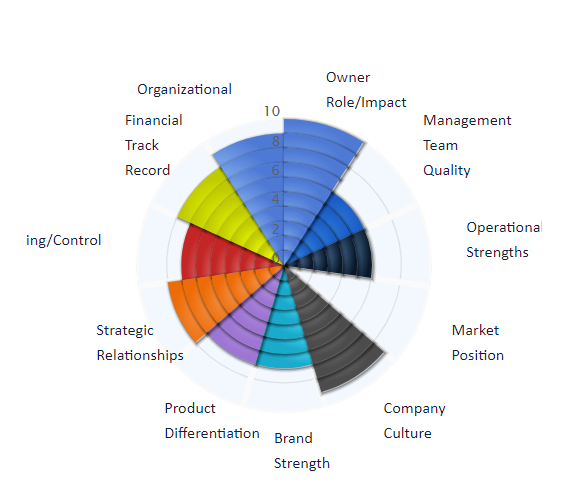
The secret to an effective SWOT analysis for business owners
by The Alternative Board (UK)
Listen to Audio Version:
A SWOT Analysis. Let’s start at the beginning…
What is a SWOT analysis?
A SWOT analysis is an important aspect of a company’s strategic plan. It allows business leaders to know their company’s strengths, weaknesses, opportunities, and threats.
This means that entrepreneurs are not ‘flying blind’ in their businesses but can understand and focus their attention in the right areas.
Strengths and weaknesses are internally focused and reflect the strengths and weaknesses of both the business and the owner.
Opportunities and threats are externally focused.
Opportunities represent potential new markets to pursue, new technologies to consider adopting and other options that you should consider taking advantage of.
Threats, on the other hand, represent external possibilities that you should consider when assessing your specific business.
A different approach to a SWOT analysis
Many people conduct a SWOT analysis by bullet-pointing or listing the strengths, weaknesses, opportunities, and threats of their business.
Yet this approach often leaves business owners with a very high-level view of their business, without any actionable insights to take away. Additionally, by taking the approach of just ‘thinking’ about these things, rather than being asked the challenging questions, owners can miss important details about their business that they could not see before.
So, how can a SWOT analysis be an effective tool that leads to business growth?
As part of our business builder’s blueprint platform, we at TAB use a much more detailed SWOT Analysis approach.
It fits in with our overall planning process; the personal vision statement shows an owner where they want to be, and the SWOT gives us a snapshot of where the business is currently, then the strategic plan we create bridges the gap.
Our approach is based on how happy a business owner feels with each area of their business.
We get them to rate this from 1-10 so they can create an overall, insightful picture of what really are their strengths, weaknesses, opportunities, and threats.
As a result, they will see what their own priorities should be, going forward. All these things are measured on an interactive balance wheel as shown below.

Key steps for an effective SWOT analysis
1. Evaluate your strengths & weaknesses
Here are the questions to answer about how happy you feel about this area of your business, and rate them from 1-10 (10 being a strength, 1 being a weakness):
- Would you consider your company’s location, geography, intellectual property, business processes and other resources/assets as a strength or weakness?
- Would you consider your level of involvement and impact on your company (without it being overly dependent on you) a strength or a weakness?
- Would you consider the overall resilience and make-up of your management team a strength or a weakness?
- Would you consider your place in the marketplace compared to your competitors a strength or a weakness?
- Would you consider your company culture to be a strength or a weakness?
- Would you consider your brand to be a strength or a weakness?
- Would you consider your product/service differentiation a strength or a weakness?
- Would you consider your leveraging of strategic relationships a strength or a weakness?
- How effectively have you planned and achieved the strategic objectives of the business?
- Would you consider your ability to deliver the financial results you expect to be a strength or a weakness?
Once you have rated these on a scale of 1-10, you will be able to see your true strengths and weaknesses. Write both a ‘strengths statement’ and a ‘weaknesses statement’ to summarise the key things that you need to capitalise on and focus on.
2. Focus on your opportunities
Similarly, answer the following questions about your opportunities (still rating from 1-10):
- What opportunity is there to better penetrate existing markets and customers?
- What opportunities exist to develop new alliances and distribution channels?
- How might better governance, accountability, and performance management improve your business?
- Would you consider your current technology and ability to utilise new technology as a strength or a weakness?
- To what extent can the skills and capabilities of your staff be matched to future business needs?
- What opportunities exist to take advantage of emerging trends and future customer needs in your industry?
- How significant are the opportunities to take advantage of seasonal, capacity and market variations?
- How significant are the opportunities to take advantage of seasonal, capacity and market variations?
- What business or market intelligence could you gather to create an advantage?
- What opportunities exist to improve and demand for your brand?
- How significant are the opportunities to capitalise on competitor vulnerabilities? What impact would operational improvements provide to your business?
- What opportunities exist to improve the effectiveness and alignment of your team?
Write an opportunities statement summarising the highest priority actions to capitalise on your opportunities. You can then prepare to seize the right opportunities as a business owner.
3. Identify the threats to your business
Finally, answer these questions that are designed to focus on threats:
- Are your assets and data at risk due to poor internal controls or a lack of insurance?
- Do you have health, time or other personal availability issues that are a threat to your business?
- How significant is the threat of losing key managers or employees?
- Are there emerging trends in your culture that could threaten your business?
- Have any of your key competitors implemented changes that threaten your business?
- How significant is the threat of new competitors or substitutes?
- Are there pricing trends in your industry that are a threat to your business?
- How significant is the threat of economic factors to your business?
- How significant is the threat of legislative or regulatory changes to your business?
- How dependent is your business on a small number of customers?
- Are there significant changes to the demographics of your market that could threaten your business?
- Are there emerging advancements in technology that could threaten your business?
- How significant is the threat of weather or environmental risks to your business?
Write a threat statement to tighten your focus on where your business needs to be most protected. You might also be interested in the nine steps to protect your business.
4. Join a peer advisory board
A SWOT Analysis is just one way to identify the strengths and weaknesses of your business.
Another is to join us on a peer advisory board.

In a confidential setting, business owners and leaders share ideas and insights, taking turns to discuss their challenges and receive impartial advice.
Not only that, but leaders get the accountability they need to get stuff done and learn from the experience of other business owners.
Find out more about TAB Membership, refine your strengths and weaknesses, and start to grow your business.
Related articles

Strategic Planning Made Easy: A Blueprint for Success
Drive your business forward with a strategic planning day. Discover the importance of setting clear objectives, SWOT analysis, and creating actions.

Navigating the return to the office
Julian Smith details how business owners can navigate the return to the office following lockdown and COVID-19.

Does Culture Really Eat Strategy for Breakfast?
Discover why your company culture can make or break your business strategy and how aligning both can drive lasting success for your organisation.





